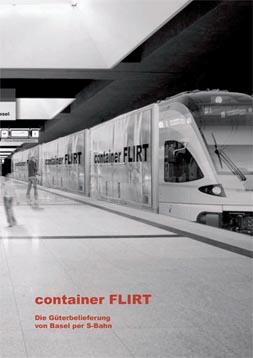Logistics - Container Flirt - die Güterbelieferung von Basel per S-Bahn

Students:, Anja Stürchler, Soley Suter
Location: Group work in Basel
Date: January, 2007
Type: Research project, student work, infrastructure
Basel Nord, the current harbor complex and the industrial and infrastructural services along the Rhine occupy one of the most strategic and valuable areas of land of the whole region. Accessible only via dusty roads traveled by large trucks, or by the industrial trains, this area of MetroBasel is practically locked off to the larges part of the population, making the riverfront a heaven for pigeons and junk yards.
On the other hand, two sites exist in the closer and further vicinity, that offer great potential for a replacement and relocation of this infrastructure node. A few hundred meters to the east, large zone sandwiched in between highways, railroad tracks and dirt roads, can act as an immediate site for this center of infrastructure and industry. What is necessary to transform it into an efficient node of all carriers of traffic and logistics? Apart from the obvious benefit of access to the waterfront for the public, and access to the lines of infrastructure for the logistics, can both functions profit more deeply from each other. Can we lay out a new set of canals or waterways, thus structuring and transforming a large part of Basel?
As a second phase, and maybe more distant phase of urban transformation, the zone between the airport and the Rhine moves into focus. It is in this part of MetroBasel, that four modes of traffic – air, highway, rail and water – meet and form a unique proximity and matrix of connection points. How would this part of MetroBasel have to be reformed and rethought, to enable this concentration of infrastructure and logistics? What changes on an administrative level are necessary to truly work on the very grounds of three countries simultaneously? What is the benefit of concentrating logistics – one of the ‚high-tech industries‘ of the future – on one location? What will happen when Switzerland joins the EU and when the oil price reaches a level of 200$ per Barrel?
And, last but not least, as the infrastructure zones of yesterday are today‘s primary and most sought-after zones of urban renewal, and hottest areas of development, will those projected new infrastructure zones become tomorrow‘s (or thereafter‘s) zones of urban redevelopment? Can we influence and steer a city‘s future by deciding upon its infrastructure and locations of logistics?
Download the Book PDF

